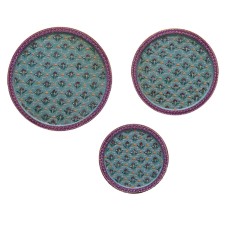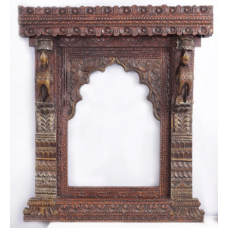Blogs
The Legacy of Handlooms: A Weaver’s Tale
The Legacy of Handlooms: A
Weaver’s Tale
For
centuries, handlooms have been an integral part of India's cultural and
artistic heritage. Each weave tells a story of tradition, skill, and
craftsmanship, passed down through generations. Despite the rise of mechanized
production, handlooms remain a symbol of sustainable living and cultural pride.
This article delves into the inspiring tale of a weaver, his craft, and the
enduring legacy of handlooms in modern India.
A Journey Through Time: The Art of Handloom Weaving
Handloom
weaving in India dates back thousands of years. Ancient texts like the Rigveda
mention weaving as a revered craft. The diversity of Indian handlooms is
astonishing, with each region specializing in unique patterns, techniques, and
fabrics. From the vibrant Banarasi silk of Uttar Pradesh to the earthy tones of
Kanchipuram silk in Tamil Nadu, handlooms reflect the cultural essence of their
origins.
Our weaver, Ramesh, hails from a small village in Gujarat, renowned for its intricate Bandhani patterns. His family has been involved in weaving for over five generations. "Each piece I create carries the soul of my ancestors," Ramesh shares.
The Weaver’s Tale: Passion Meets Perseverance
Ramesh’s
journey is not just about weaving; it's a story of resilience and adaptation.
Like many artisans, he faced challenges in competing with mass-produced
textiles. Yet, Ramesh chose to stay true to his roots. "Handlooms are more
than just fabric; they are a connection to our heritage," he says.
Despite
economic hardships, Ramesh has adapted to modern trends by incorporating
contemporary designs into traditional Bandhani patterns. His collaboration with
designers has brought a new audience to his craft. Today, his work is
celebrated at exhibitions and fashion shows, proving that the charm of
handlooms transcends time.
Why Handlooms Matter Today
In a
world dominated by fast fashion, handlooms offer a sustainable alternative.
They are eco-friendly, requiring no electricity, and promote fair trade by
directly benefiting artisans. Moreover, handlooms symbolize slow fashion,
encouraging consumers to appreciate the craftsmanship behind each piece.
Handlooms also play a vital role in empowering rural economies. The Government of India has initiated various schemes to support weavers, such as the Handloom Mark Scheme, which ensures authenticity, and the National Handloom Development Programme, aimed at modernizing the sector.
Challenges in Preserving the Legacy
Despite
their cultural significance, handlooms face numerous challenges. The influx of
cheaper, machine-made alternatives has impacted demand. Additionally, younger
generations are reluctant to pursue weaving due to its labor-intensive nature
and modest financial returns.
Organizations
like Dastkar and Crafts Council of India are working to preserve
handloom traditions by promoting artisan products and providing training
programs. E-commerce platforms have also emerged as a lifeline, connecting
weavers like Ramesh to global markets.
How You Can Support Handlooms
As
consumers, we play a crucial role in keeping the legacy of handlooms alive.
Here are some ways you can contribute:
- Buy Handloom Products: Opt for authentic handloom
fabrics from certified stores or directly from artisans.
- Promote Awareness: Share the stories of
weavers and their crafts to inspire others.
- Choose Quality Over
Quantity:
Embrace slow fashion by investing in timeless, handcrafted pieces.
- Support Artisan Initiatives: Participate in exhibitions
and fairs showcasing handloom products.
Conclusion: Weaving a Future for Handlooms
The tale
of Ramesh and countless other artisans highlights the importance of preserving
the art of handloom weaving. It’s not just about fabric; it’s about keeping a
legacy alive. By choosing handloom products, we honor their craft, sustain
rural livelihoods, and embrace a piece of India’s rich cultural heritage.
So, the next time you drape a saree or wear a handloom kurta, remember the weaver’s tale behind it—a tale woven with passion, perseverance, and pride.
References:
- Handloom Mark Scheme: India Handloom Brand
- Dastkar - A Society for Crafts and Craftspeople: Dastkar India
- Crafts Council of India: Crafts Council





Leave your comment